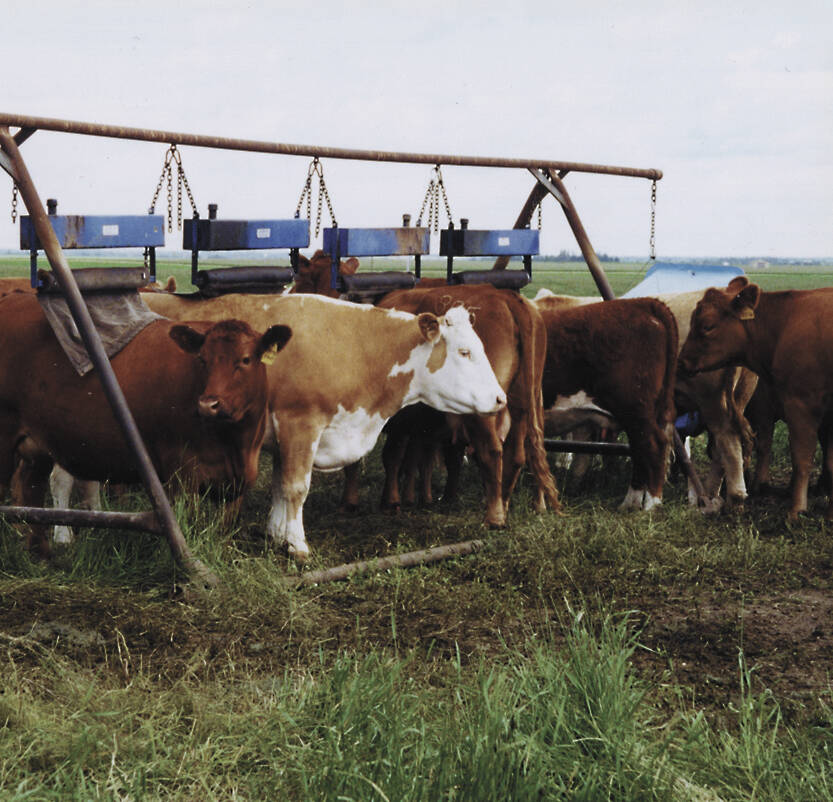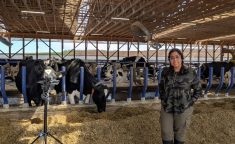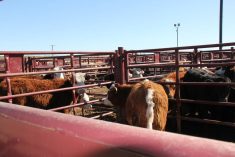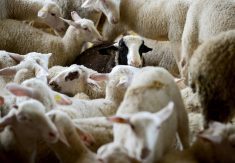Telling customers about their farm and how their animals are raised is part of the marketing strategy for grass-fed beef producers, and two tools to help them were demonstrated at the Direct Farm Marketing Conference here last month.
“We have some neat systems developing that are great tools to use in the endeavour of producing grass-fed beef,” said Vince McConnell, beef business development specialist with Alberta Agriculture and Rural Development.
McConnell described bioTrack and bioLinks, management systems developed by BIO, an Ontario-based producer co-operative specializing in animal identification technology.
Read Also

Shifting standards on cattle parasite control
Parasite product resistance has more farmers and veterinarians thinking differently about how to control issues like lice or worms.
BioLinks is an Internet-based inventory management, pricing, sales tracking and traceability system designed for small to medium processors. The simple bar-coding system has been developed for use with smartphones and can identify and track every cut of meat from an individual carcass.
“The smartphone system uses common technology with a scanner and it synchronizes to a database. It utilizes bar codes to track inventory,” said McConnell.
Following the development of bioLinks, the BIO co-operative took the project a step further in creating bioTrack, an on-farm management system that enables producers to log pedigree, location, movements, health records, performance, expenses, income, biosecurity and connects to both the RFID tags as well as the bioLink information to provide traceability for every cut of beef directly to the consumer.
“Full ability on any smartphone changes the way that farmers will look at data collection,” BIO general manager Mike McMorris said in an interview. “No more calving/lambing books that can get lost or go through the washing machine. Information on animals can be taken to the barn and field and when there, data can be collected on a large number of factors important to business decisions.”
McMorris said farmers can flag information and set up automatic email reminders at a set time to follow up on actions noted. Pictures of animals and locations can be captured for future use.
“It is basically a herd book on your phone,” said McConnell. “You can scan the animal’s bar code and then enter the information. You can take a picture of the animal and note treatments. When the animal is pro-cessed a carcass tag can be attached and linked to the RFID tag to allow recording of things like grading, fat thickness and dress weight.”
Information logged through the bioTrack system can be linked to a home database for analysis and then carried through to the bioLink program.
McMorris said the systems allow producers to make better management decisions.
“These could include identification and culling of low-producing animals, better selection of new sires to meet the needs of the herd, comparison of performance of offspring of current sires and benchmarking performance and impact of decisions.”
Finally, a QR code can be placed on the meat’s packaging to give the consumer access to information on where the animal was raised, nutrition and processing details, as well as recipes and cooking tips.
“With this serial number embedded into the QR code, it gives us true traceability, which allows you to offer your customers the option of knowing details on every aspect of how that meat came to the store shelf. It certainly gives them a lot of added confidence in your product,” said McConnell. “The QR code also allows for the customer to give instantaneous feedback about the product. Reviews the customers may send are completely private and confidential.”
Alberta Agriculture invested in the original programming and initial funding for the project came from Beef Farmers of Ontario and Ontario Sheep Marketing Association and Ontario Goat.
For more information visit, bridgingintelligence.com.
















